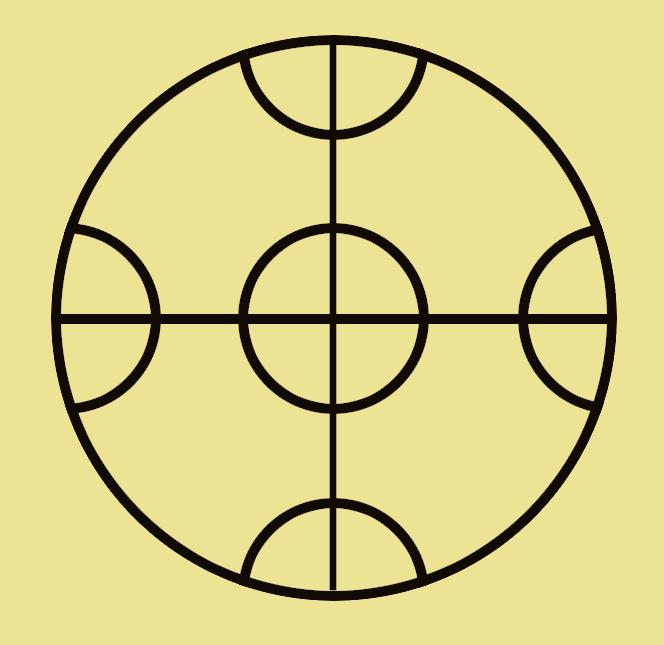Watermelon Chess on:
[Wikipedia]
[Google]
[Amazon]
 Watermelon chess is a two-player
Watermelon chess is a two-player
 Watermelon chess is a two-player
Watermelon chess is a two-player abstract strategy game
An abstract strategy game is a type of strategy game that has minimal or no narrative theme, an outcome determined only by player choice (with minimal or no randomness), and in which each player has perfect information about the game. For example ...
from China
China, officially the People's Republic of China (PRC), is a country in East Asia. With population of China, a population exceeding 1.4 billion, it is the list of countries by population (United Nations), second-most populous country after ...
where it is known as ''xi gua qi''. It is also known as the surround game and globe. Played on a network of curved lines, players take turns to move a piece, capturing the opponent's pieces by surrounding them. The game is related to the bear games of the ancient Romans
The Roman people was the ethnicity and the body of Roman citizenship, Roman citizens
(; ) during the Roman Kingdom, the Roman Republic, and the Roman Empire. This concept underwent considerable changes throughout the long history of the Roman ...
, and uses the same board as some of them. The Go variant sz'kwa uses the same board.
Watermelon chess is a pebble game similar to Go
, though unrelated to the game of chess
Chess is a board game for two players. It is an abstract strategy game that involves Perfect information, no hidden information and no elements of game of chance, chance. It is played on a square chessboard, board consisting of 64 squares arran ...
.
Equipment
The board is composed of a large circle with an inner middle circle. Four semicircles form a north, south, east, and west arrangement in the interior of the larger circle. The large circle and the smaller middle circle are divided equally into four pie slices. This creates for twenty-one intersection points where the pieces are played upon. Each player has six pieces. One player plays the black pieces, and the other player plays the white pieces, however, any two colors or distinguishable objects will do.Rules
Players decide what colors to play, and who starts first. Each player's six pieces are initially placed on the six closest intersection points on their side of the board. Players alternate their turns, and move one piece per turn. A piece can move one space per turn following the pattern on the board. Enemy pieces can be captured if surrounded by the player's pieces so that it cannot move. Only one enemy piece can be captured per turn. Captured pieces are removed from the board. The goal is to reduce the opponent's numbers to two pieces.Comparison to bear games
The game is related to the bear games of ancient Rome, and uses the same board as some of them. The difference is that in watermelon chess each player has six pieces, whereas in the bear games, there are three hunters played by one player, and one bear played by the other player. Furthermore, in the bear games, only the hunters can surround and immobilize the movements of the one bear; the bear merely moves to avoid this as it is impossible for the bear itself to immobilize any of the hunters. In watermelon chess, every piece can participate in immobilizing the other player's pieces; furthermore, surrounded enemy pieces are captured.References
External links
*{{bgg, 29500, Watermelon Chess Abstract strategy games